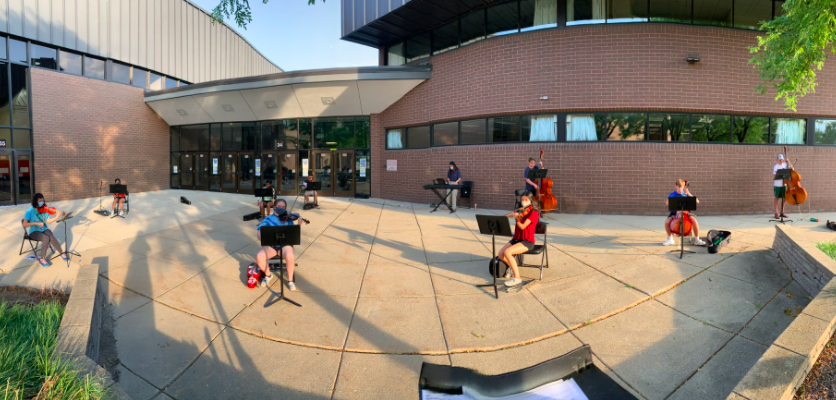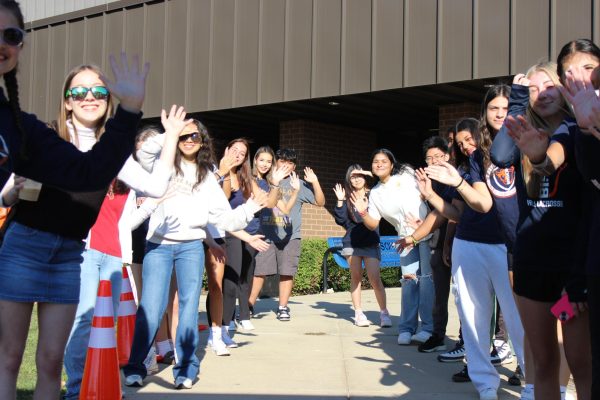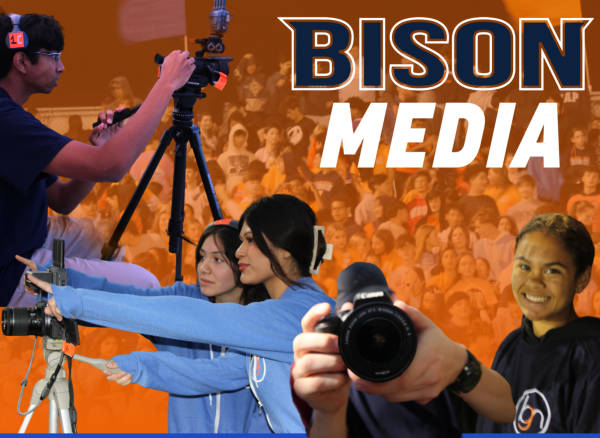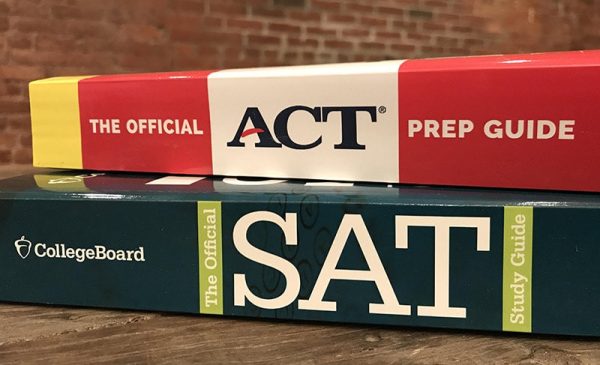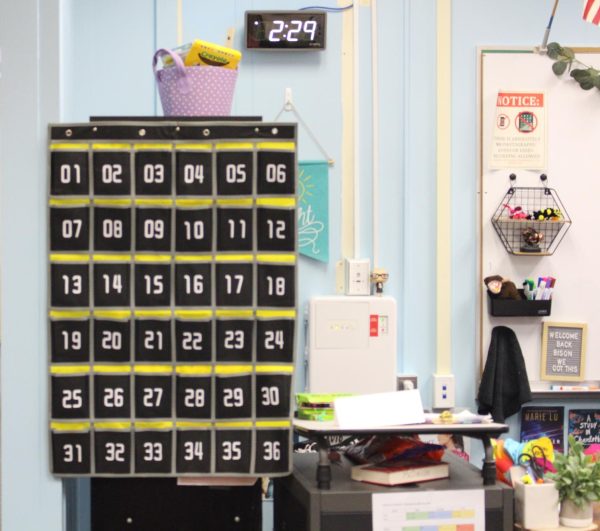Band and orchestra adjust to remote and socially distanced learning
Courtesy of @BG_Bison Twitter page
BG Orchestra members practice at a socially distant outdoor rehearsal near the circle drive.
When band director Henry Kappler and orchestra director Elizabeth Bennett found out about this year’s remote learning plan, they were not surprised. They had both considered the possibility of returning to school via Zoom and planned accordingly—but this doesn’t mean they were without concerns.
A variety of challenges come along with virtual learning in nearly every subject, and music is no exception. Hearing others’ instruments is a key component of playing in a musical ensemble, Kappler said. The audio lag on Zoom and other video conferencing websites makes this difficult.
“If you have everyone playing at the same time, it’s utter chaos,” Kappler said.
Bennett and Kappler have attempted to remedy the challenges brought about by this lag in many ways, including utilizing breakout rooms and other technology such as Flipgrid, a video submission app, during class. They have also found an offline solution: socially distanced outdoor rehearsals.
“I spent all summer working and coming up with ideas,” Bennett said. “I was constantly planning different possibilities and trying to get creative. This time does create challenges, but it also creates possibility.”
Band began meeting over the summer. Kappler continued the annual tradition of marching band camp while following new Illinois High School Association safety guidelines, such as students staying 6 feet apart in groups of 50 or less. It has continued to meet for two and a half hours on Friday nights. Orchestra began meeting on Wednesday nights at the beginning of the school year.
“Everything is outside and socially distanced,” band and orchestra member senior Sydney Paunan said. “I’ve been wondering what’s going to happen when it gets cold. We obviously can’t go outside, so that’s another thing to consider.”
Band practices on the football field with four groups: woodwinds, brass, percussion and color guard. These groups are separated by 30 feet to meet safety guidelines. Unlike other years, it is not competitive—however, it is still a marching band and will be replacing competitions with parent-only performances. Orchestra rehearses on the circle drive while socially distanced. Live rehearsals have many benefits and are an important aspect of making music and fostering a community, Paunan said.
“Compared to last year and being isolated for so long, it’s nice to have the opportunity to play in person with other people.”
Bennett and Kappler have also found benefits of online learning. For example, private and group breakout rooms have allowed them to meet with students on an individual basis, which was nearly impossible in a physical classroom setting.
“[Breakout rooms] are really great for giving students personalized comments,” Kappler said. “No one wants to be pointed out in the middle of rehearsal, so it’s a nice way to give them that private feedback.”
Bennett has also taken advantage of continuing a previous tradition of Careers in Music presentations virtually. These presentations formerly took place in the theater, where professionals pursuing careers in music in the Chicagoland area visited and explained their careers. Now, musicians can show their workspace in a Zoom call from any location around the globe.
“It definitely has a value for them to come visit us in person,” Bennett said. “But when we can go to their world, that’s totally different and unique. Plus there are less limits on what fields and locations we can hear from.”
Despite the challenges of remote and socially distanced learning, both Bennett and Kappler feel that it is important to continue making music. Music allows us to connect with others, and continuing music education is a top priority of band and orchestra programs during difficult times.
“Music has an ability that nothing else has,” Bennett said. “It can express emotions, find joy or express sorrow. I truly believe that music is more important than ever right now.”

